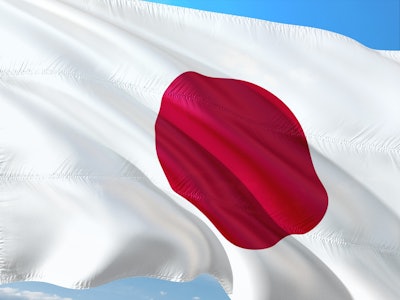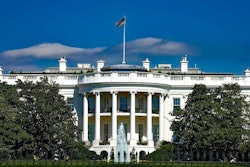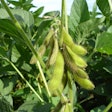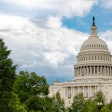
President Biden’s in-person meeting with Japanese Prime Minister Yoshihide Suga last week is a reminder of the strong and enduring relationship between the United States and one of its top grain customers.
In addition to overarching topics like climate change and COVID-19, the two leaders strategized various ways to address their respective relationships with their mutual trading partner, China.
According to the White House’s U.S. – Japan Joint Leaders’ Statement issued just after the meeting, the two leaders said:
“The United States and Japan are committed to maintaining and further strengthening our robust bilateral trade relationship while advancing shared interests, including digital trade cooperation, the development of trade policies that support climate change objectives, World Trade Organization (WTO) reform, and promoting inclusive growth in the Indo-Pacific.”
The two countries’ willingness to work together on issues of importance mirrors USGC’s relationship working in Japan for more than 60 years, helping to grow the Japanese feed, livestock and starch industries.
"Over the decades, Japan has proven to be a steady and reliable customer of U.S. feed grains, and more recently, ethanol,” says Ryan LeGrand, USGC president and CEO. “USGC values Japan as one of our top customers and we look forward to continuing our work with their feed, livestock, starch and ethanol sectors."
Although Japanese purchases of U.S. grains have recently been eclipsed by Mexico and China, Japan ranked as the second-largest grains in all forms (GIAF) market in 2019/2020 with exports of more than 13.4 million metric tons (equivalent to 529.7 million bushels), valued at $5.47 billion.
By commodity, Japan represented the second-largest buyer of U.S. corn, third-largest buyer of U.S. barley/barley products, fourth-largest buyer of U.S. sorghum and seventh-largest buyer of U.S. distiller's dried grains with solubles (DDGS).
“Since USGC opened its first international office in Tokyo in 1961, Japan has grown and remains a large importer and end-user of U.S. feed grains,” says Cary Sifferath, USGC senior director of global programs.
“Japanese importers have become so ingrained with the U.S. as a supplier of corn, barley, sorghum and their co-products that several major Japanese firms have built infrastructure to originate and export U.S. feed grains to end-users in the country and now export to other key international markets as well.”
In 2019/2020, Japan purchased more than 10 million metric tons (nearly 395 million bushels) of U.S. corn, equating to 22 percent of the U.S. corn exported. Sales totaled more than 41,500 metric tons (1.97 million bushels) of U.S. barley and barley products and 222,000 metric tons (8.74 million bushels) of U.S. sorghum during the same period. Japan set a record in 2019/2020 for U.S. DDGS purchases importing roughly 482,000 metric tons.
The U.S. and Japan signed a phase-one free trade agreement which took effect on Jan. 1, 2020, and while it is not a comprehensive package, it does solidify trade between the two counties with zero duties on imports of U.S. corn for feed and the elimination of a three-percent tariff for corn other than feed.
The agreement also eliminated U.S. sorghum tariffs, which were as high as three percent and reduced a mark-up on barley for feed. It includes a staged tariff reduction for U.S. ethanol and corn, barley and sorghum flour.
The agreement allows U.S. farmers and agribusinesses to compete on a level playing field with competitors from countries in the Comprehensive and Progressive Agreement for Trans-Pacific Partnership (CPTPP) and the EU-Japan Economic Partnership Agreement (US-Japan EPA). USGC is also optimistic additional market access measures related to ethanol may be addressed in the next round of negotiations with Japan.
“The long-term relationship the U.S. and Japan have developed over the years -- with the help of USGC – has allowed Japan to become a long-term and reliable market for U.S. feed grain exports,” Sifferath says.
“The phase one trade agreement and the recent President Biden and Prime Minister Suga meeting amplify that great relationship. Now USGC looks to build on it with ethanol via ETBE and movement into direct blending of ethanol in the Japan automobile fuel supply.”
While Japan does not currently direct blend ethanol, E10 can greatly support Japan in meeting its long-term net zero greenhouse gas (GHG) emissions target, while feeding into its Paris Agreement commitments.
Currently, Japan uses ethanol in the form of Ethyl-Tert-Butyl Ether (ETBE), and the U.S. has up to 66 percent market share, equal to 143 million gallons in potential demand for U.S. ethanol, equivalent to 50.7 million bushels of corn. However, the current blend rate is less than two percent, meaning that more than five times the amount of emissions could be reduced if 10 percent, direct blending occurred.
Just what substantive advancements may come of the meeting between Biden and Suga is yet unknown, but USGC is hopeful the U.S. and Japan can build on their many years of working together and is supportive of the possibility of lower market access barriers as the countries move forward.
For more information, visit the U.S. Grains Council.

















